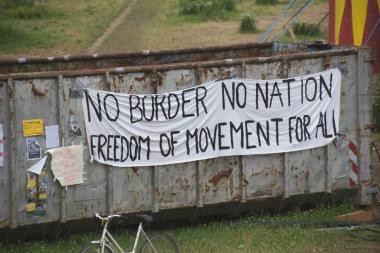In today’s dynamic era of nation building, the European project has been hailed as a new step towards creating a free world. The same is echoed by the ‘four freedoms’ that serve as the foundations of amalgamating societies across lines of culture, traditions, history and geography. With Brexit in 2016 and the following negotiations thereafter, one of the four freedoms has come under heated debate, the free movement of persons. While the British Prime Minister has been vehemently opposing this freedom, the EU Leaders have been stressing their strong support to this freedom. While the negotiations continue, its interesting to see how the world fares on the free movement of persons.
From the start of 1900s till date, an approximate of ten such agreements exist all over the world with the first being Britain and Ireland in 1923 with the enactment of the Common Travel Agreement. Apart from the EU (Schengen Agreement), Russia and Belarus have a similar arrangement under the name of Union State (1996), the Nordic countries signed a passport union (1954) while the Andrean Community, CARICOM, Gulf Cooperation and the East African Community are a product of the 21st century. While every single arrangement is varied in text and composition, two other such relationships exist, ones not only based on economic rights but also on the ideals of friendship. The Friendship Treaty that exists between India-Nepal (1950) and India-Bhutan (1949) are one of their kinds and certainly one of the first amongst developing nations. That is a feat in itself that even the EU cannot claim as the pioneer having begun the process via the Treaty of Rome signed in 1957 and enacted in 1958.
The friendship treaty between India and Nepal does not limit to free movement of persons but also in matters of property, trade and commerce and residence. The result of which is that Indians and Nepalis have made their homes on either side of the border, people transcend the abstract notion of borders whereby the great Nepali Sherpa hero, Tenzing Norgay took his last breath on Indian land while the ex-crown prince found his princess in India. However, in recent times the relations between the two nations have come under heavy criticism. Flared up by nationalistic notions on both sides of the border, petitions have also called for a wall and stricter border controls. I do not wish to comment on the political face of the issue, rather, I would take a look on the economic advantages and disadvantages that the open border brings.
Countries are prone to experience labour shortages, especially when the case of specific skilled positions are required in the rapidly advancing age of technological progress. The National Health Service of the UK is a fine example to be quoted here, about 10% of the staff at NHS are not British. Similarly, in an economy, there may appear shortages in certain professions such as teaching and nursing. These vacancies can take a long time to fill because of the time taken to undertake training. If there is free movement of labour, qualified workers will be attracted to fill these vacancies making the economy more flexible and overcome shortages quicker. Countries which suffer from lack of workers due to a rapidly increasing ageing population also see benefits from countries rich in demographic dividends.
Moreover, if an economy experiences labour shortages, it will put strong upward pressure on wages; higher wages can easily lead to inflationary pressures. Free movement of labour means rising wages will attract more labour into a country and this will prevent excess wage inflation. Remittances according to Pew Research Centre’s latest report indicates the survival of many countries depend on this very income coming from migrant workers abroad and help the home country. Nepal is known to be a very big beneficiary of about 31% of the GDP. Apart from these, migration is also know to create additional demand in the host country boosting consumption and hence the GDP. Additionally, it saves huge costs of maintaining force for verifications at borders and from creating them in the first place.
However, freedom of movement of persons does create certain lags in economic terms. Large net flows of people cause infrastructure problems especially for housing. Further more, due to increase in immigrants, a high population density may create problems of congestion leading to a decrease in quality of life. Furthermore, the labour market theoretically might see a dip in wages due to over supply of labour. However, the same has seen contrary results by academicians such as Manacorda, Dustmann and, Nickell and Saleheen as they note, “Empirical research on the labour market effects of immigration to the UK finds little overall adverse effects of immigration on wages and employment for the UK-born…The less skilled are closer substitutes for immigrants than the more highly skilled. So any pressures from increased competition for jobs is more likely to be found among less skilled workers. But these effects are small.” There is also the case for shortage of workers and brain drain cases in under developed economies. A fine example of the same could be seen in Dhadhing in Nepal which did not have workers for the reconstruction work post the 2015 earthquake.
While no extensive study is available on the case of economic implications of the India-Nepal free movement of people, nationalistic rhetoric has caused injury to a feat that India-Nepal achieved at the very beginning of their respective contemporary histories.
Post Disclaimer
The opinions expressed in this essay are those of the authors. They do not purport to reflect the opinions or views of CCS.


